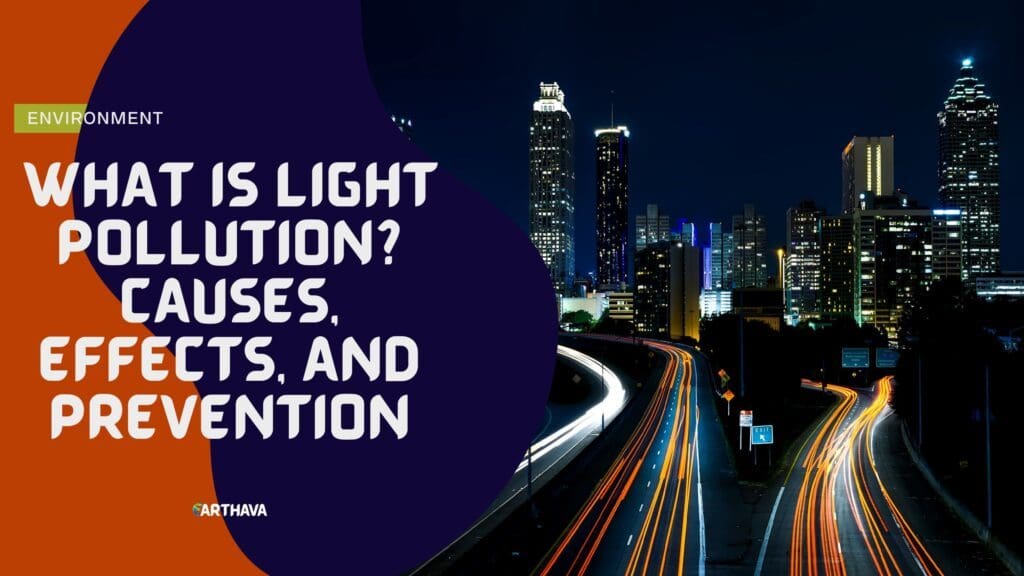The current push for environmental awareness and living has never been greater than where it is now. Your investment in the earth is becoming increasingly necessary as threats of all kinds affect the world. Light pollution is one of those threats.

Light pollution is a growing problem that affects any location with a significant amount of artificial lighting. It occurs when artificial, or man-made, lighting brightens the sky, especially at night. This can then negatively impact, people, animals, and the environment.
If you’re hearing this term more often lately, you’re not alone. It’s important to read up on the causes and effects of light pollution and how to prevent it.
Causes
Since light pollution comes from light, many sources can give off this pollution. Over-illumination, light placement and glares most commonly contribute to the light pollution in the sky.
Too many light sources that stay on for extended periods have a significant impact on light pollution. With all the sources that constantly give off light, the pollution adds up until there is a visible glow in the sky. This wastes energy, too.
Light placement is another factor that contributes to pollution. In places like cities, lights are close together and will give off more amounts of light into the sky.
Glares, too, affect light pollution. Any light that reflects off surfaces causes a glare and can reflect into the sky as well. Clouds and hazy weather also tend to reflect light–so, the two factors combined to create more light pollution.
The sources of light pollution can come from anything that emits light. From cars to skyscrapers to streetlights, any light can contribute. Since the demand for vehicles is increasing, the number of headlights will increase and, as a result, light pollution will as well. This perpetually adds to the problem.
But what are the problems, exactly?
Effects
The effects of light pollution reach humans, animals, and the environment.
The first issue that affects humans and the environment alike is energy consumption. With more lights, comes more needs for energy. Production for that energy commonly uses fossil fuels and non-renewable sources. This costs people money and pollutes the environment.
With ecosystems, animals have shown changed behaviors and migration patterns due to excessive light. Birds change their flight and migration paths in favor of city lights. Baby turtles use the horizon to guide them towards the ocean once they hatch. Recently, though, they are turning away from the ocean and heading towards the lights.
This could lead to more and more species, endangered or invasive, coming to heavily lit areas. It could also drive away some species, like frogs, that use lighting to mate or hibernate.
With people, constant light can cause health problems like headaches or anxiety. It can disrupt sleep as some forms of artificial light interrupt circadian rhythms and can damage eyesight. Light pollution may also affect seasonal affective disorder (SAD), which causes people to become depressed during a decrease in natural lighting. If artificial light becomes more prominent, SAD cases may increase.
Last, light pollution affects visibility. You will not be able to see the sky and the stars with all the pollution in the way. But luckily, there are ways to combat this disruption.
Solutions
One of the easiest ways to prevent light pollution is to turn off the lights. You can keep them on only as long as you need and turn them off when you’re done. This is a small change that adds up.
Another switch you can make is buying LED lights. These last longer than standard lights and are more deliberate with their illumination. This can apply to companies and the city in general, too. Things like LED traffic signals could save cities 80-90% on traffic light energy costs as well as reduce light pollution.
With more LED lights, individuals and cities can cut down on the amount of lighting there is, which would reduce pollution further.
City officials and workers should also be more deliberate with their implementation of lighting. It should face down and have shields to direct the light efficiently.
With better planning and use, people can also turn to natural lighting more. This would decrease the number of artificial lights needed and rely on architecture to work with the sun.
Last, spreading awareness is the foundation of bringing about change. With more education, you can help make a difference and decrease light pollution altogether.


